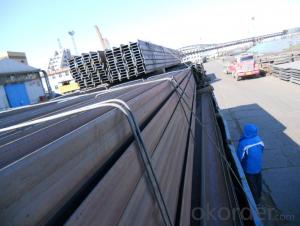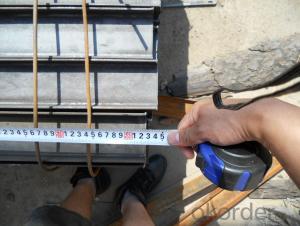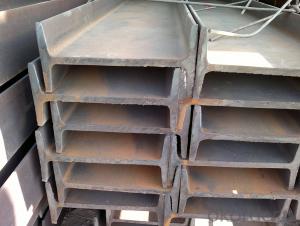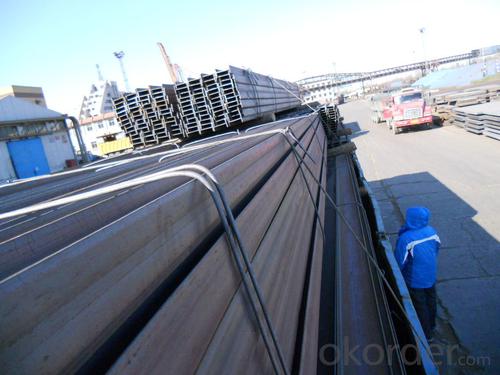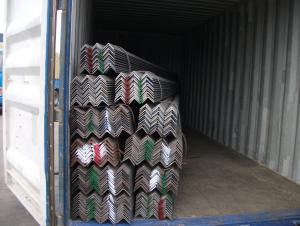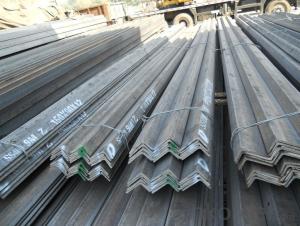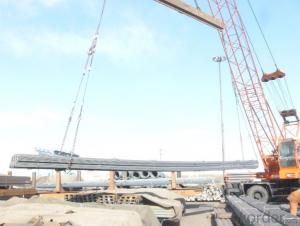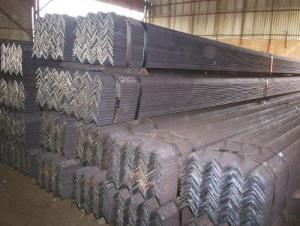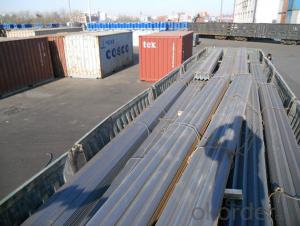High Quality Hot Rolled Steel Equal Angle Equal Angle for Construction
- Loading Port:
- Tianjin
- Payment Terms:
- TT OR LC
- Min Order Qty:
- 25 m.t.
- Supply Capability:
- 2000000 m.t./month
OKorder Service Pledge
OKorder Financial Service
You Might Also Like
Specification
Product Description:
OKorder is offering High Quality Hot Rolled Steel Equal Angle Equal Angle for Construction at great prices with worldwide shipping. Our supplier is a world-class manufacturer of steel, with our products utilized the world over. OKorder annually supplies products to European, North American and Asian markets. We provide quotations within 24 hours of receiving an inquiry and guarantee competitive prices.
Product Applications:
High Quality Hot Rolled Steel Equal Angle Equal Angle for Construction are ideal for structural applications and are widely used in the construction of buildings and bridges, and the manufacturing, petrochemical, and transportation industries.
Product Advantages:
OKorder's High Quality Hot Rolled Steel Equal Angle Equal Angle for Construction are durable, strong, and resist corrosion. They are newly produeced by good materiales.
Main Product Features:
· Premium quality
· Prompt delivery & seaworthy packing (30 days after receiving deposit)
· Corrosion resistance
· Can be recycled and reused
· Mill test certification
· Professional Service
· Competitive pricing
Product Specifications:
Specifications of High Quality Hot Rolled Steel Equal Angle Equal Angle for Construction
1. Invoicing on theoretical weight or actual weight as customer request
2. Length: 6m, 9m, 12m as following table
3. Sizes

Sizes: 25mm-250mm | ||
a*t | ||
25*2.5-4.0 | 70*6.0-9.0 | 130*9.0-15 |
30*2.5-6.6 | 75*6.0-9.0 | 140*10-14 |
36*3.0-5.0 | 80*5.0-10 | 150*10-20 |
38*2.3-6.0 | 90*7.0-10 | 160*10-16 |
40*3.0-5.0 | 100*6.0-12 | 175*12-15 |
45*4.0-6.0 | 110*8.0-10 | 180*12-18 |
50*4.0-6.0 | 120*6.0-15 | 200*14-25 |
60*4.0-8.0 | 125*8.0-14 | 250*25 |
5. Payment terms:
1).100% irrevocable L/C at sight.
2).30% T/T prepaid and the balance against the copy of B/L.
3).30% T/T prepaid and the balance against L/C
6.Material details:
Alloy No | Grade | Element (%) | |||||
C | Mn | S | P | Si | |||
Q235 | B | 0.12—0.20 | 0.3—0.7 | ≤0.045 | ≤0.045 | ≤0.3 | |
Alloy No | Grade | Yielding strength point( Mpa) | |||||
Thickness (mm) | |||||||
≤16 | >16--40 | >40--60 | >60--100 | ||||
≥ | |||||||
Q235 | B | 235 | 225 | 215 | 205 | ||
Alloy No | Grade | Tensile strength (Mpa) | Elongation after fracture (%) | ||||
Thickness (mm) | |||||||
≤16 | >16--40 | >40--60 | >60--100 | ||||
≥ | |||||||
Q235 | B | 375--500 | 26 | 25 | 24 | 23 | |
Usage & Applications of High Quality Hot Rolled Steel Equal Angle Equal Angle for Construction
According to the needs of different structures, Angle can compose to different force support component, and also can be the connections between components. It is widely used in various building structures and engineering structures such as roof beams, bridges, transmission towers, hoisting machinery and transport machinery, ships, industrial furnaces, reaction tower, container frame and warehouse etc.
Packaging & Delivery of High Quality Hot Rolled Steel Equal Angle Equal Angle for Construction
1. Packing: it is nude packed in bundles by steel wire rod
2. Bundle weight: not more than 3.5MT for bulk vessel; less than 3 MT for container load
3. Marks:
Color marking: There will be color marking on both end of the bundle for the cargo delivered by bulk vessel. That makes it easily to distinguish at the destination port.
Tag mark: there will be tag mark tied up on the bundles. The information usually including supplier logo and name, product name, made in China, shipping marks and other information request by the customer.
If loading by container the marking is not needed, but we will prepare it as customer request.
Production flow of High Quality Hot Rolled Steel Equal Angle Equal Angle for Construction
Material prepare (billet) —heat up—rough rolling—precision rolling—cooling—packing—storage and transportation
FAQ:
Q1: Why buy Materials & Equipment from OKorder.com?
A1: All products offered byOKorder.com are carefully selected from China's most reliable manufacturing enterprises. Through its ISO certifications, OKorder.com adheres to the highest standards and a commitment to supply chain safety and customer satisfaction.
Q2: How do we guarantee the quality of our products?
A2: We have established an advanced quality management system which conducts strict quality tests at every step, from raw materials to the final product. At the same time, we provide extensive follow-up service assurances as required.
Q3: How soon can we receive the product after purchase?
A3: Within three days of placing an order, we will begin production. The specific shipping date is dependent upon international and government factors, but is typically 7 to 10 workdays.
Images:
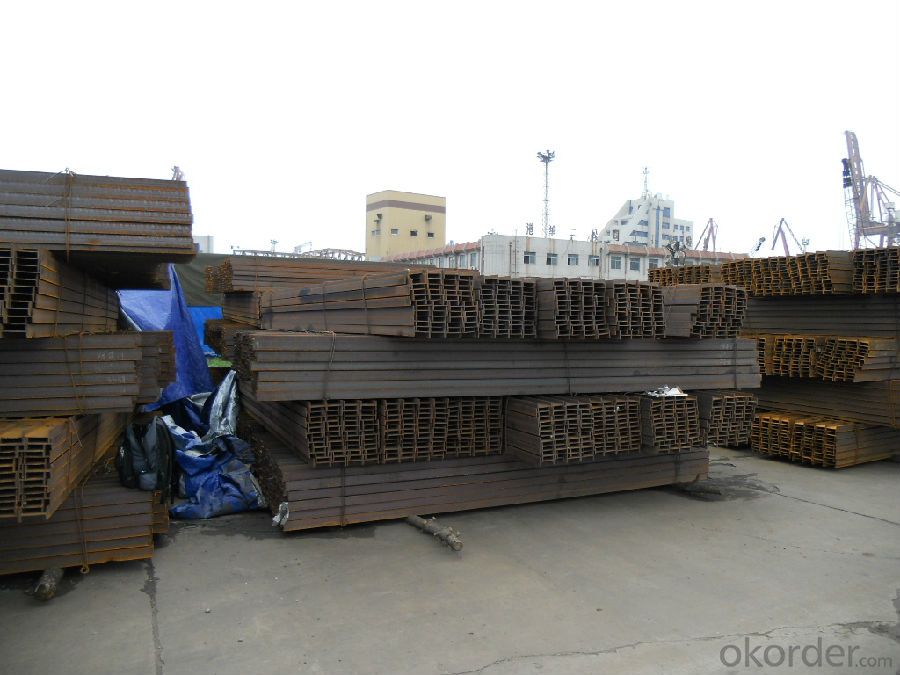
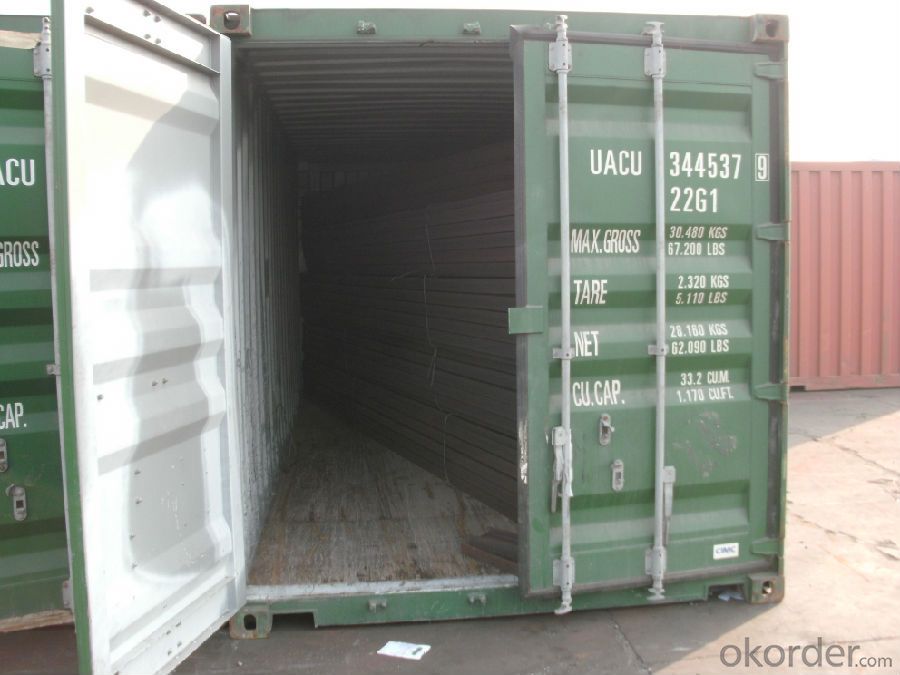
- Q: Can steel angles be used for electrical conduits or cable trays?
- No, steel angles are not typically used for electrical conduits or cable trays. These applications usually require specialized materials and designs that are specifically engineered for electrical installations to ensure safety and efficiency.
- Q: What are the different types of steel angles used in engineering?
- Engineering incorporates a range of steel angle varieties that enjoy common usage. These angles are typically fashioned from hot-rolled steel and come in various sizes and dimensions to suit diverse applications. Within engineering, different steel angle types are employed, including: 1. Equal angles: These angles boast identical sides and are frequently utilized for structural purposes, like supporting beams or columns. They furnish stability and strength to the structure and are commonly employed in construction ventures. 2. Unequal angles: As the name suggests, unequal angles feature sides of differing lengths. These angles are often employed in situations where one side must be longer or shorter than the other, such as bracing or framing. 3. L-shaped angles: L-shaped angles possess one side longer than the other, forming an L shape. They are frequently used in construction to offer support and reinforcement, particularly for corners, joints, or connections. 4. Structural angles: Structural angles are specifically designed to bear heavy loads and confer structural stability. They are commonly deployed in constructing frame structures, bridges, or other load-bearing applications. 5. Stainless steel angles: Stainless steel angles are fabricated from stainless steel, which delivers excellent corrosion resistance and durability. These angles are often employed in environments where rust or corrosion may be a concern, such as marine applications or food processing facilities. 6. Galvanized steel angles: Galvanized steel angles are coated with a layer of zinc to provide corrosion resistance. These angles are commonly used in outdoor applications or environments where exposure to moisture or harsh conditions is expected. 7. Perforated steel angles: Perforated steel angles feature holes or perforations along their length, facilitating enhanced ventilation or drainage. These angles are frequently employed in situations where airflow or water drainage is required, such as in HVAC systems or outdoor structures. Overall, the selection of a steel angle hinges upon the specific requirements of an engineering project. Factors such as load-bearing capacity, resistance to corrosion, and aesthetic considerations play a crucial role in determining the appropriate type of steel angle for a particular application.
- Q: Can steel angles be used for framing in modular homes?
- Yes, steel angles can be used for framing in modular homes. Steel angles are commonly used in construction for their strength and durability. They are versatile and can be used in various applications, including framing. Steel angles provide excellent load-bearing capacity and structural support, making them suitable for modular home construction. Additionally, steel angles can be easily fabricated and customized to meet specific design requirements. Their resistance to corrosion and fire also adds to their suitability for modular home framing. Overall, steel angles are a reliable and efficient choice for framing in modular homes.
- Q: How do steel angles compare to wooden beams?
- Steel angles and wooden beams possess distinct characteristics and abilities that render them suitable for diverse applications. Steel angles, being comprised of steel, demonstrate exceptional strength and longevity. They exhibit remarkable tensile strength and resist bending and warping even when subjected to substantial loads. This renders them an excellent choice for providing structural support in constructions such as buildings, bridges, and other similar projects. Moreover, steel angles possess the advantage of being non-combustible, thereby enhancing fire safety. Conversely, wooden beams offer their own set of advantages. As a natural material, wood is readily accessible and renewable, making it a more environmentally conscious option when compared to steel. Additionally, wooden beams possess an inherent aesthetic appeal, particularly in traditional or rustic designs. They can be effortlessly customized and shaped, enabling the creation of intricate and imaginative designs. Nevertheless, wooden beams do have certain limitations with regards to strength and durability. They do not exhibit the same level of robustness as steel angles and are susceptible to bending, warping, and rotting over time. Additionally, wood is combustible, which can pose safety concerns. In conclusion, both steel angles and wooden beams possess their own unique strengths and weaknesses. Steel angles excel in projects necessitating high strength and durability, while wooden beams offer a more natural and visually appealing option. Ultimately, the choice between the two depends on specific project requirements, budgetary considerations, and personal preferences.
- Q: Can steel angles be used in HVAC ductwork installations?
- Yes, steel angles can be used in HVAC ductwork installations. They are commonly used to provide structural support and reinforcement to the ductwork system, ensuring stability and durability. Steel angles can be easily integrated into the ductwork design, facilitating efficient installation and improving overall system performance.
- Q: What are the maximum allowable deflections for steel angles?
- The maximum allowable deflections for steel angles depend on various factors such as the type of angle used, the material properties, the loading conditions, and the design codes and standards being followed. In general, the deflection limits are determined to ensure the structural integrity and functionality of the steel angles. Excessive deflections can cause structural instability, reduced load-carrying capacity, and potential failure of the angles. Design codes and standards such as the American Institute of Steel Construction (AISC) specify deflection criteria for different applications. For example, the AISC 360-16 specification provides deflection limits based on the span length and the serviceability requirements of the specific structure. The allowable deflections for steel angles are usually expressed as a fraction of the unsupported span length. Typical deflection limits for steel angles range from 1/240 to 1/360 of the span length, depending on the specific application and loading conditions. It is important to note that these deflection limits are guidelines and should be assessed in conjunction with other design considerations such as strength, stability, and dynamic effects. Additionally, consulting the applicable design codes and standards, as well as seeking professional engineering advice, is crucial to determine the precise maximum allowable deflections for steel angles in a given project.
- Q: Can steel angles be used for HVAC ductwork?
- Yes, steel angles can be used for HVAC ductwork. Steel angles are commonly used in the construction industry for various applications, including as structural supports and reinforcements. When it comes to HVAC ductwork, steel angles can be used as a framework to support the ducts and provide stability. They can be welded or bolted together to create a sturdy and durable structure for the ductwork system. Additionally, steel angles can be easily customized and cut to specific lengths, making them suitable for various ductwork configurations. However, it is important to note that steel angles may require proper insulation and lining to prevent condensation and maintain the desired temperature within the ducts.
- Q: How do steel angles resist corrosion?
- Passivation is the process by which steel angles develop a protective layer on their surface, which helps them withstand corrosion. This layer acts as a barrier against moisture, oxygen, and chemicals that are corrosive to the steel. Typically, steel angles are made from stainless steel, which contains at least 10.5% chromium. Chromium plays a crucial role in the formation of a thin layer of chromium oxide on the steel's surface. This oxide layer is invisible but highly stable, preventing further corrosion. The chromium oxide layer acts as a physical barrier, shielding the underlying steel from the harmful effects of the environment. It is also self-repairing, meaning that if it gets damaged or scratched, it will naturally regenerate and restore its protective properties. Stainless steel angles may also contain other alloying elements like nickel and molybdenum, which enhance their resistance to corrosion. These elements contribute to the formation of a more stable oxide layer and provide added protection against localized corrosion, such as pitting and crevice corrosion. To further enhance their corrosion resistance, steel angles can be treated with various surface finishes or coatings. These treatments, like hot-dip galvanizing, electroplating, or applying organic coatings, create additional layers that act as extra barriers, preventing corrosive substances from reaching the steel surface. In summary, steel angles resist corrosion by forming a protective layer of chromium oxide, which acts as a barrier against corrosive elements. The inclusion of other alloying elements and the application of surface treatments further enhance their ability to withstand corrosion in different environments.
- Q: Are steel angles resistant to impact or vibration?
- Steel angles are known for their high strength and durability, making them generally resistant to impact and vibration. However, the specific resistance to these forces would depend on various factors such as the thickness and quality of the steel, as well as the magnitude and frequency of the impact or vibration.
- Q: Can steel angles be used for load-bearing walls?
- Yes, steel angles can be used for load-bearing walls. Steel angles are commonly used in construction as a structural element to provide support and stability. They are often used to reinforce load-bearing walls by adding strength and rigidity. Steel angles can be used to distribute the weight of a load evenly, making them suitable for load-bearing applications. However, it is important to ensure that the steel angles are appropriately designed and installed to meet the specific load requirements of the wall. Consulting with a structural engineer or construction professional is recommended to ensure the proper use of steel angles for load-bearing walls.
Send your message to us
High Quality Hot Rolled Steel Equal Angle Equal Angle for Construction
- Loading Port:
- Tianjin
- Payment Terms:
- TT OR LC
- Min Order Qty:
- 25 m.t.
- Supply Capability:
- 2000000 m.t./month
OKorder Service Pledge
OKorder Financial Service
Similar products
Hot products
Hot Searches
Related keywords
